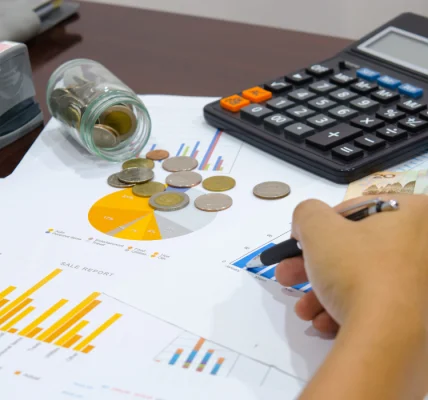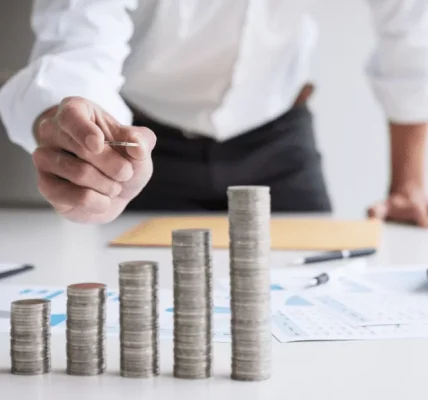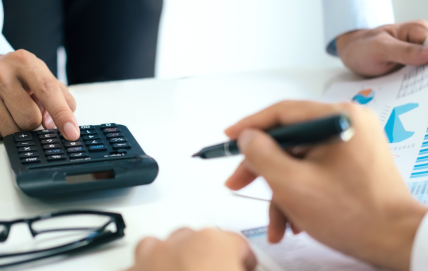Starting A Career As A Forex Trader? Know These Important Things
Starting forex trading looks easy in theory; you open a trade at a low price, close it at a higher price, Read More
Just like mathematics where you start your journey with numbers, a forex trader has to start with core concepts; these concepts include getting yourself familiar with forex terms, and brokers, and then learning advanced trading concepts, such as technical and fundamental analysis, risk management, and trading psychology. However, a new trader gets piled up under so much knowledge around, questioning “Where to start?” We have created this guide for new traders, and they will find everything here they need to know about forex trading. Forex trading involves the exchange of global currency pairs. In the forex market, there are buyers and sellers for each pair, like any other market, and you place trades – meaning you buy/sell currencies in exchange for another. Because all currencies have different prices, no two currencies are equal. When traders exchange currencies, they execute transactions in a way so that they can make a profit from it. Before you get your hands into forex trading, here are a few things that you should understand about the market: The forex market is open to everyone. Young or old, employed or studying, all kinds of people can trade. Being the top most liquid market, the forex market gets enough traction from different market participants. Corporates, world banks, governments, retail traders — you will find everyone both big and small participants in the forex market. Because of the variety of big participants, there is a huge flow of money in the market, giving it the status of the most liquid market in the world. The size of the forex market is more than $7 trillion. And this is possible with different trading currencies in the market. On a typical trading day, you can trade over 90+ forex currency pairs. However, not all currency pairs are liquid – meaning some are less traded than others. Of all the currency pairs in the market, major pairs are the most traded. These pairs are composed of two currencies – one being the dollar, while the other being a currency from a developed nation. Because all the currencies are backed by stable economies, traders prefer trading with these pairs. EUR/USD, for instance, is the most traded forex currency pair in the market. However, trading other pairs can also be profitable, if you have a robust strategy with you. After major pairs, minor pairs are traded the most, followed by exotic pairs — the least traded and riskiest currency pairs. Each currency pair is quoted A/B. Here, A is the base currency, and B is the quote currency. For example, if the current price of EUR/USD is 1.5, then you would have to pay $1.5 to buy 1 Euro. The currency pair on the left side, which is the base currency, is always one unit. The rate exchange between two currency pairs is never the same. It fluctuates, going up and down. You can find the most updated price between any two currency pairs with the help of a currency calculator. To use, you have to enter your base and quote currency. The calculator will show you the current rate of exchange. A forex trader can trade in three different market situations. They are spot, forward, and future. Pick any one of those after carefully assessing your trading goals and the risk factor. Different terms are used in trading every day. You should know these terms so that you can navigate the forex market without any confusion. Here are the top 10 most common forex terms you should know: 1) Currency Pair: Currency pairs are the instruments that you will be trading in the forex market. With over 100 + different forex currency pairs, you will be getting a lot of options which include the most liquid to most volatile currency pairs in the forex market. Made up of two currencies, a currency pair has two parts: the base currency and the quote currency. The currency pair of the left is called the base currency, and the right currency is called the quote currency. Traders have the full flexibility to trade any of the currency, as long as their broker allows them. However, not all currencies are worth trading because some currencies are less traded than others. 2) Liquidity: When you decide whether to trade a currency pair or not, you always check its liquidity first. Liquidity tells you how much is your currency being traded. This also indicates the strength of buyers and sellers for that currency. If the liquidity is high, this means that there are more buyers and sellers. As a result, higher liquidity currency pairs get executed faster because orders get executed quickly. 3) Leverage: The best feature of the forex market is the leverage. This is a type of loan offer that a broker offers to traders, so they can open larger positions. Before you execute a trade, you select the leverage you want to execute your trades with. If you choose leverage of 1:10, it means that for every $1, you can trade $10. 4) Exchange Rate: Take any currency pair. All currency pairs are related to each other through an exchange rate. This tells how much one unit of currency is equal. The exchange rate is not a fixed value, it moves up and down because of the change in the prices and the market’s sentiments. 5) Margin: If you want to open a trade, then you need to fulfil all the requirements of your broker. Margin is one such requirement. To open any leveraged position, you need to maintain a percentage of the amount as account balance or trading capital. This is the amount of money needed to have a sufficient margin. All brokers have different margin requirements, depending on the account type and trading instrument chosen. So choose your forex broker according to your requirements. Traders take the help of a margin calculator to determine the margin requirement for their trades. Enter the leverage position that you want to take and the calculator will show you how much minimum deposit you would need to enter a trade. 6) Pip: All currency pairs have a movement in their exchange rate. The smallest movement in the price is pip. Typically, a pip stands at a fourth decimal position in an exchange rate. For example, if we say, the price of EUR/USD is 1.6752, then pip is 0.0002. With time the exchange rate will move, if the price of EUR/USD is 1.6753 after a few seconds, then we can say that there is a change of one pip. Pips are important because traders use them to calculate their profits. There are two ways to do this: manually and with a calculator. Traders prefer doing it with a calculator for convenience. A pip calculator is perhaps the fastest, and error-free, giving traders the exact calculation of pip values. 7) Trend: “Follow the trend” is a common phrase you might have heard in the trading community. A trend is the direction in which your currency pair is moving. The forex market moves either in an uptrend or a downtrend. There is another trend known as the sideways trend, which indicates no significant price movements but the price keeps moving back and forth. Traders try to capitalise on their price movements based on the trend. If there is an uptrend, traders buy a currency pair at a lower price and sell at the highest closing price. 8) Trading strategy: A trading strategy is a set of rules, followed by a trader to make profits. Every trader has their own strategies. It could be a simple strategy that is based on lines of resistance and support and a few indicators. Or it could be a complex strategy – using more advanced indicators. Anyway, the purpose is the same: to make successful trades. Before creating a trading strategy, a trader should mark and define their trading goals, so they can move in the direction. Some of the popular trading strategies are trend trading, price action, position trading, etc. Starting your career in forex trading is full of ups and downs. There is a lot of misinformation and confusion because of the plethora of resources. The purpose of this guide was to give you a clear idea of a few things you need to know as a beginner. As you progress further on your trading journey, you can improve your knowledge every day by learning more concepts. Until then, get a clear understanding of the skill set you need to acquire and the different forex terms that you need to get acquainted with to trade in the market.
What is Forex Trading?
Things to Know About Forex Trading
Major Forex Terms to Know
Final Words






